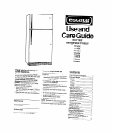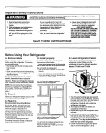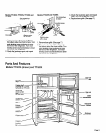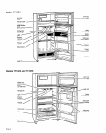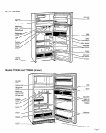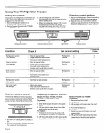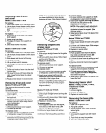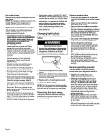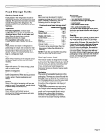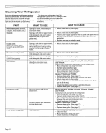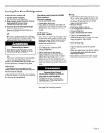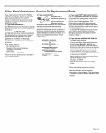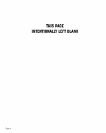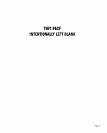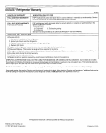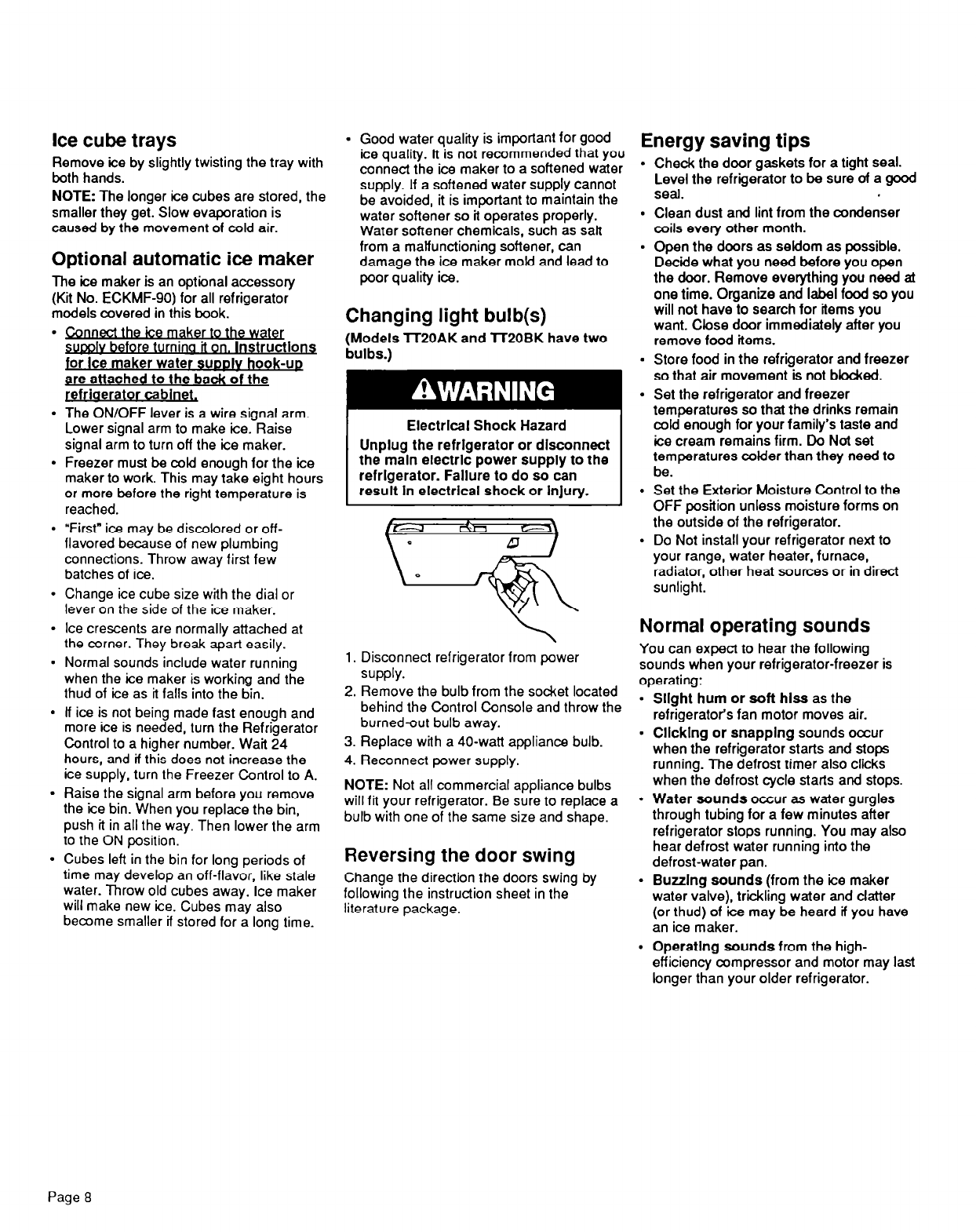
Ice cube trays
Remove ice by slightly twisting the tray with
both hands.
NOTE: The longer ice cubes are stored, the
smaller they get. Slow evaporation is
caused by the movement of cold air.
Optional automatic ice maker
The ice maker is an optional accessory
(Kit No. ECKMF-90) for all refrigerator
models covered in this book.
.
nect the Ice maker to the wata
. .
Iv before turmna m. lnstr uctlong
for Ice maker water SUDDIV hook-uD
are attached to the back of the
refriaerator cabinet
l
The ON/OFF lever is a wire signal arm.
Lower signal arm to make ice. Raise
signal arm to turn off the ice maker.
l
Freezer must be cold enough for the ice
maker to work. This may take eight hours
or more before the right temperature is
reached.
l
“First” ice may be discolored or off -
flavored because of new plumbing
connections. Throw away first few
batches of ice.
l
Change ice cube size with the dial or
lever on the side of the ice maker.
l
Ice crescents are normally attached at
the corner. They break apart easily.
. Normal sounds include water running
when the ice maker is working and the
thud of ice as it falls into the bin.
l
ff ice is not being made fast enough and
more ice is needed, turn the Refrigerator
Control to a higher number. Wait 24
hours, and if this does not increase the
ice supply, turn the Freezer Control to A.
l
Raise the signal arm before you remove
the ice bin. When you replace the bin,
push it in all the way. Then lower the arm
to the ON position.
l
Cubes left in the bin for long periods of
time may develop an off-flavor, like stale
water. Throw old cubes away. Ice maker
will make new ice. Cubes may also
become smaller if stored for a long time.
l
Good water quality is important for good
ice quality. tt is not recommended that you
Energy saving tips
be’avbided, it is important to maintain the
water softener so it operates properly.
Water softener chemicals, such as salt
connect the ice maker to a softened water
from a malfunctioning softener, can
damage the ice maker mold and lead to
SU~~IV. If a softened water SUDDIV cannot
poor quality ice.
seal.
l
Check the door gaskets for a tight seal.
Level the refrigerator to be sure of a good
l
Clean dust and lint from the condenser
coils every other month.
l
Open the doors as sekfom as possible.
Decide what you need before you open
the door. Remove everything you need at
one time. Organize and label food so you
will not have to search for items you
want. Close door immediately after you
remove food items.
Changing light bulb(s)
(Models TTPOAK and TT20BK have two
bulbs.)
Electrlcal Shock Hazard
Unplug the refrlgerator or disconnect
the maln electric power supply to the
refrlgerator. Fallure to do so can
result In electrical shock or Injury.
1. Disconnect refrigerator from power
supply.
2. Remove the bulb from the socket located
behind the Control Console and throw the
burned-out bulb away.
3. Replace with a 40-watt appliance bulb.
4. Reconnect power supply.
NOTE: Not all commercial appliance bulbs
will fit your refrigerator. Be sure to replace a
bulb with one of the same size and shape.
Reversing the door swing
Change the direction the doors swing by
following the instruction sheet in the
literature package.
l
Store food in the refrigerator and freezer
so that air movement is not blocked.
l
Set the refrigerator and freezer
temperatures so that the drinks remain
cold enough for your family’s taste and
ice cream remains firm. Do Not set
temperatures colder than they need to
be.
l
Set the Exterior Moisture Control to the
OFF position unless moisture forms on
the outside of the refrigerator.
l
Do Not install your refrigerator next to
your range, water heater, furnace,
radiator, other heat sources or in direct
sunlight.
Normal operating sounds
You can expect to hear the following
sounds when your refrigerator-freezer is
operating:
l
Sllght hum or aoft hlaa as the
refrigerator’s fan motor moves air.
= Cllcklng or snapplng sounds occur
when the refrigerator starts and stops
running. The defrost timer also clicks
when the defrost cycle starts and stops.
l
Water sounds occur as water gurgles
through tubing for a few minutes after
refrigerator stops running. You may also
hear defrost water running into the
defrost-water pan.
l
Buulng sounds (from the ice maker
water valve), trickling water and datter
(or thud) of ice may be heard if you have
an ice maker.
l
Operatlng sounds from the high-
efficiency compressor and motor may last
longer than your older refrigerator.
Page
a



